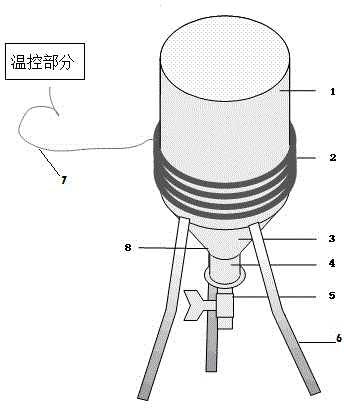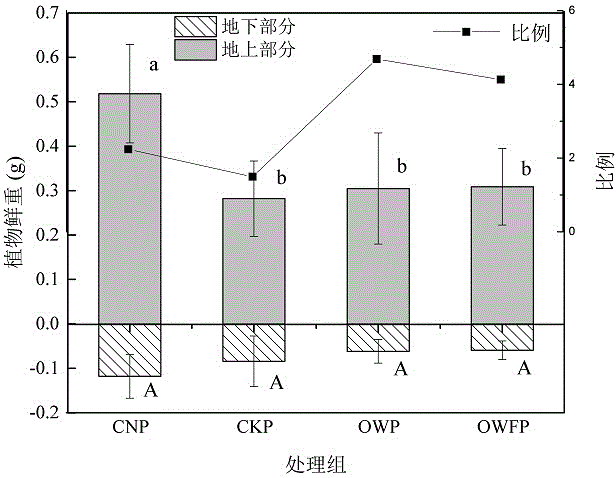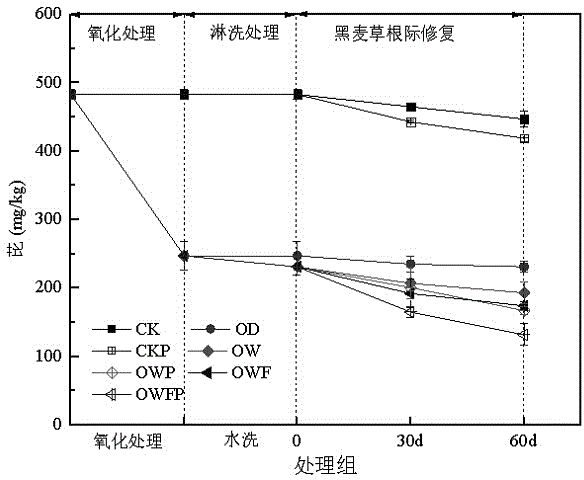Method and device for utilizing persulfate oxidation and ryegrass to restore polluted wetland soil
A technology of persulfate oxidation and persulfate is applied in the restoration of polluted soil, climate change adaptation and other directions, which can solve the problems of high cost, biological pollution of soil and groundwater, secondary pollution, etc., and improve wetland soil degradation. , The effect of low professional technical requirements and low investment
- Summary
- Abstract
- Description
- Claims
- Application Information
AI Technical Summary
Problems solved by technology
Method used
Image
Examples
Embodiment Construction
[0020] Example 1: Preliminary preparation of wetland soil contaminated by pyrene through optimized persulfate oxidation
[0021] The oxidation of soil pyrene by persulfate takes place in a temperature-controlled device. See figure 1 The device in is a simulation device for studying the use of persulfate to oxidize soil pyrene pollution, including an oxidation tank (I) and a temperature control device (II). The oxygen-contaminated soil is placed in the barrel 1 of the chemical barrel (I). The bucket-shaped bottom of the barrel body 1 is connected to the filtrate collection chamber 4, and a sieve plate 8 is separated between the bucket-shaped bottom and the filtrate collection chamber; the lower end of the filtrate collection chamber 4 is connected with the valve 5, and the bucket-shaped bottom is filled with gravel. The temperature control device (Ⅱ) is composed of a heating belt 2 and a temperature control part. The heating belt surrounds the periphery of the barrel 1. The tempe...
PUM
 Login to View More
Login to View More Abstract
Description
Claims
Application Information
 Login to View More
Login to View More - R&D
- Intellectual Property
- Life Sciences
- Materials
- Tech Scout
- Unparalleled Data Quality
- Higher Quality Content
- 60% Fewer Hallucinations
Browse by: Latest US Patents, China's latest patents, Technical Efficacy Thesaurus, Application Domain, Technology Topic, Popular Technical Reports.
© 2025 PatSnap. All rights reserved.Legal|Privacy policy|Modern Slavery Act Transparency Statement|Sitemap|About US| Contact US: help@patsnap.com



